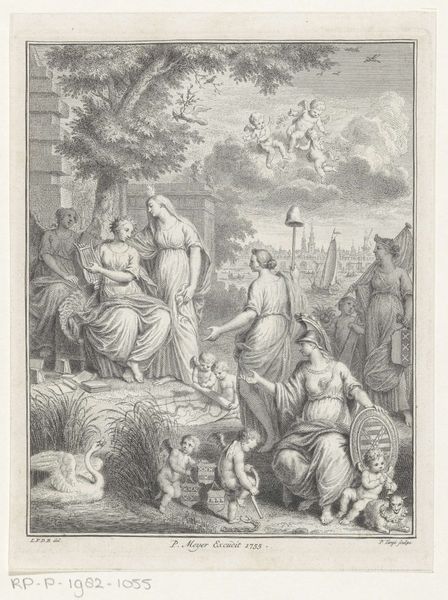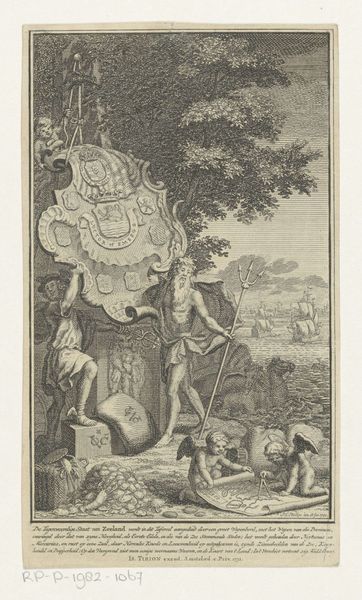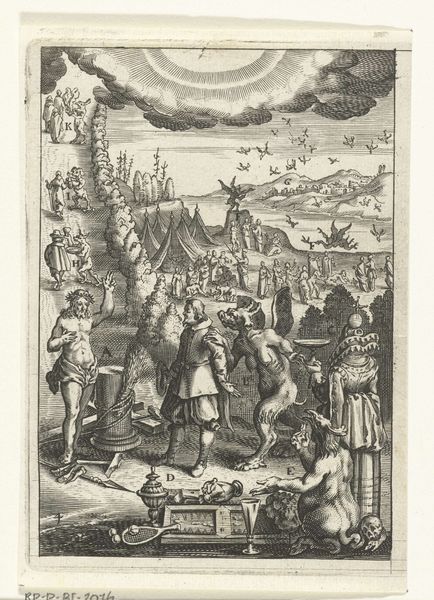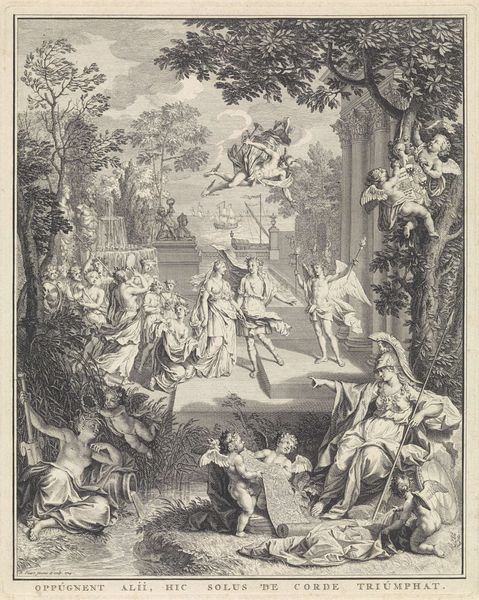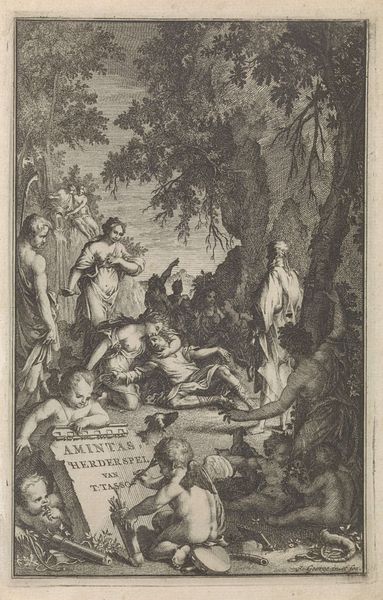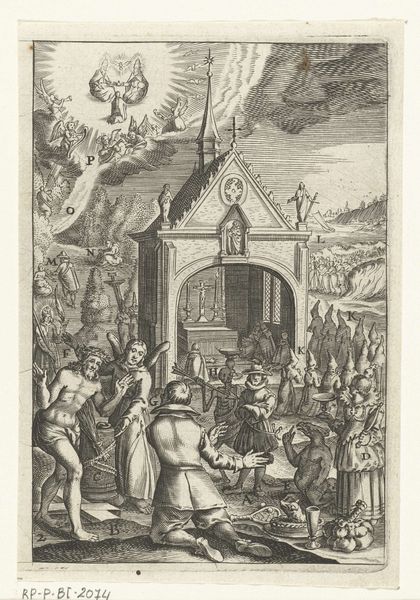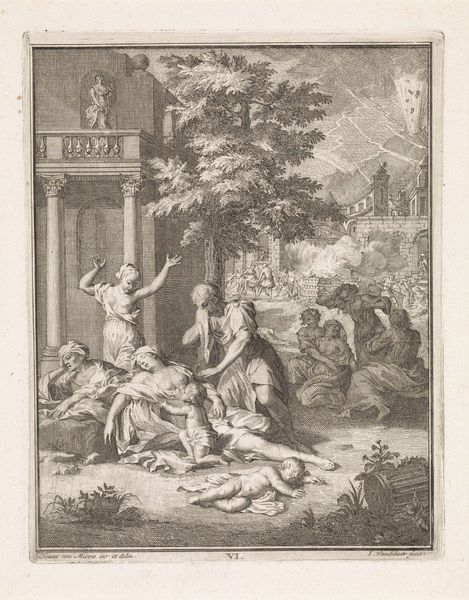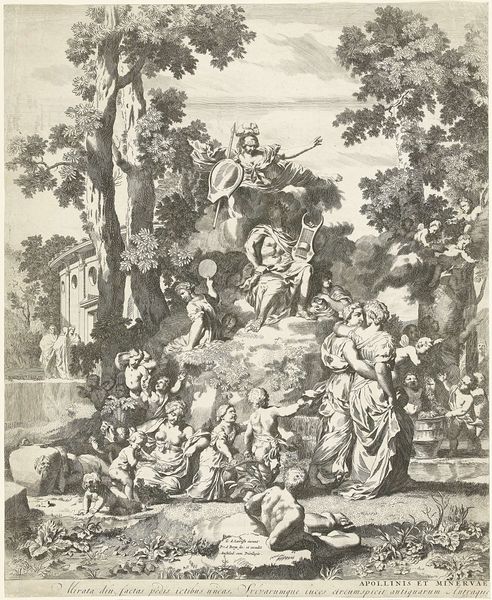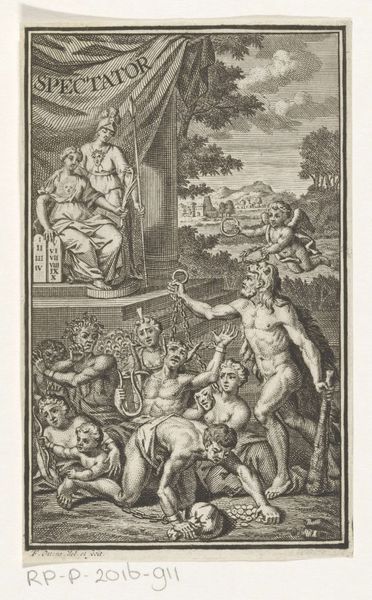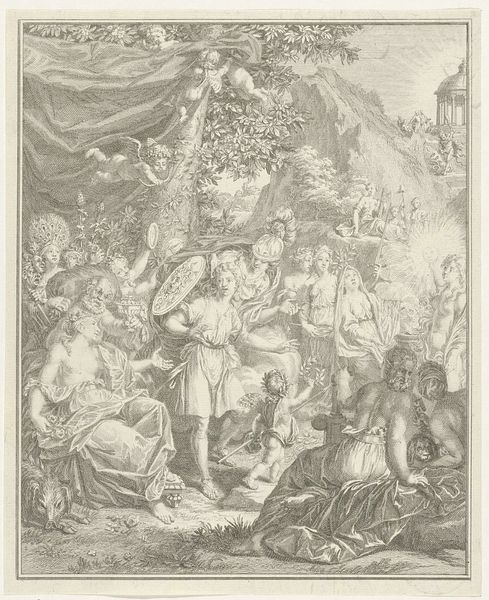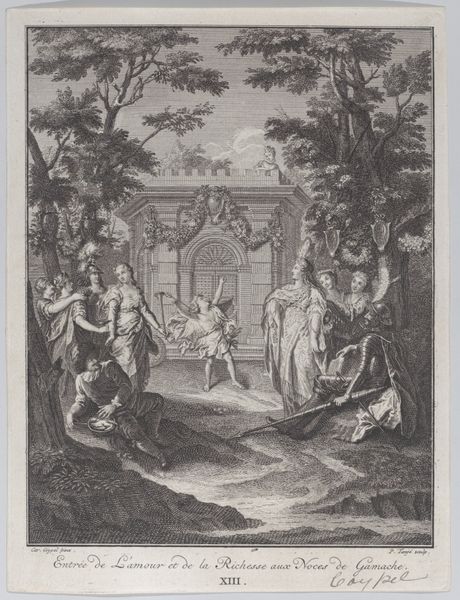
Allegorische voorstelling met grenspaal van het Watergraafsmeer 1725
0:00
0:00
johannwilhelmwindter
Rijksmuseum
print, engraving
#
allegory
#
baroque
#
dutch-golden-age
# print
#
old engraving style
#
landscape
#
caricature
#
history-painting
#
engraving
Dimensions: height 332 mm, width 215 mm
Copyright: Rijks Museum: Open Domain
Curator: Look at this print; Johann Wilhelm Windter created "Allegorische voorstelling met grenspaal van het Watergraafsmeer" around 1725. The Rijksmuseum is fortunate to have it. It depicts an allegorical scene, tied to the Watergraafsmeer. Editor: My first impression is… orderly chaos. It's an engraving, so the detail is remarkable, but the sheer number of figures, the pillar dominating the center—it feels like a lot to process at once. Curator: Exactly! It's rooted in Baroque sensibilities—embracing complexity, right? Consider the political context: The Watergraafsmeer was a polder, land reclaimed and managed. This image, allegorically, stages its very governance. The gathering of figures reflects different voices claiming stakes. Editor: The pillar then acts as a stage? The lettering on it—'Het Water Graafs op Diemer Meer’—solidifies that landmark claim. The swans in the foreground; how should we interpret these symbols? Curator: Absolutely. Swans have layered connotations. Royal power—given their association with sovereignity and dominion of resources—or are they symbols of love, associated with the ancient Greek gods? Editor: There are several women posed in relation to the men. In light of reclamation and claims of sovereignty and control, do these allude to the feminine being possessed by the patriarchy? Curator: That is possible; gender informs these symbolic orders and would place women to reflect the patriarchal undercurrents informing land management in that era. The classical drapery, for example—it places this scene within a longer history of Western power. Editor: It feels designed to instill awe. And what of the cherubs above? Are these an almost religious signal, to invoke a kind of heavenly sanction over this territory? Curator: Precisely. By positioning putti so centrally, it elevates the significance, signaling divine favor upon those who govern the region, perhaps alluding to the Protestant theological dimensions that often reinforced social hierarchy in the Dutch Golden Age. Editor: Looking again, knowing this, reshapes how I see the print. The layers of meaning, skillfully woven together… I initially saw visual noise, but there is actually deliberate, organized visual storytelling. Curator: Indeed, viewing the engraving, the artistic mastery helps unpack societal and historical complexity, allowing us a privileged lens.
Comments
No comments
Be the first to comment and join the conversation on the ultimate creative platform.
